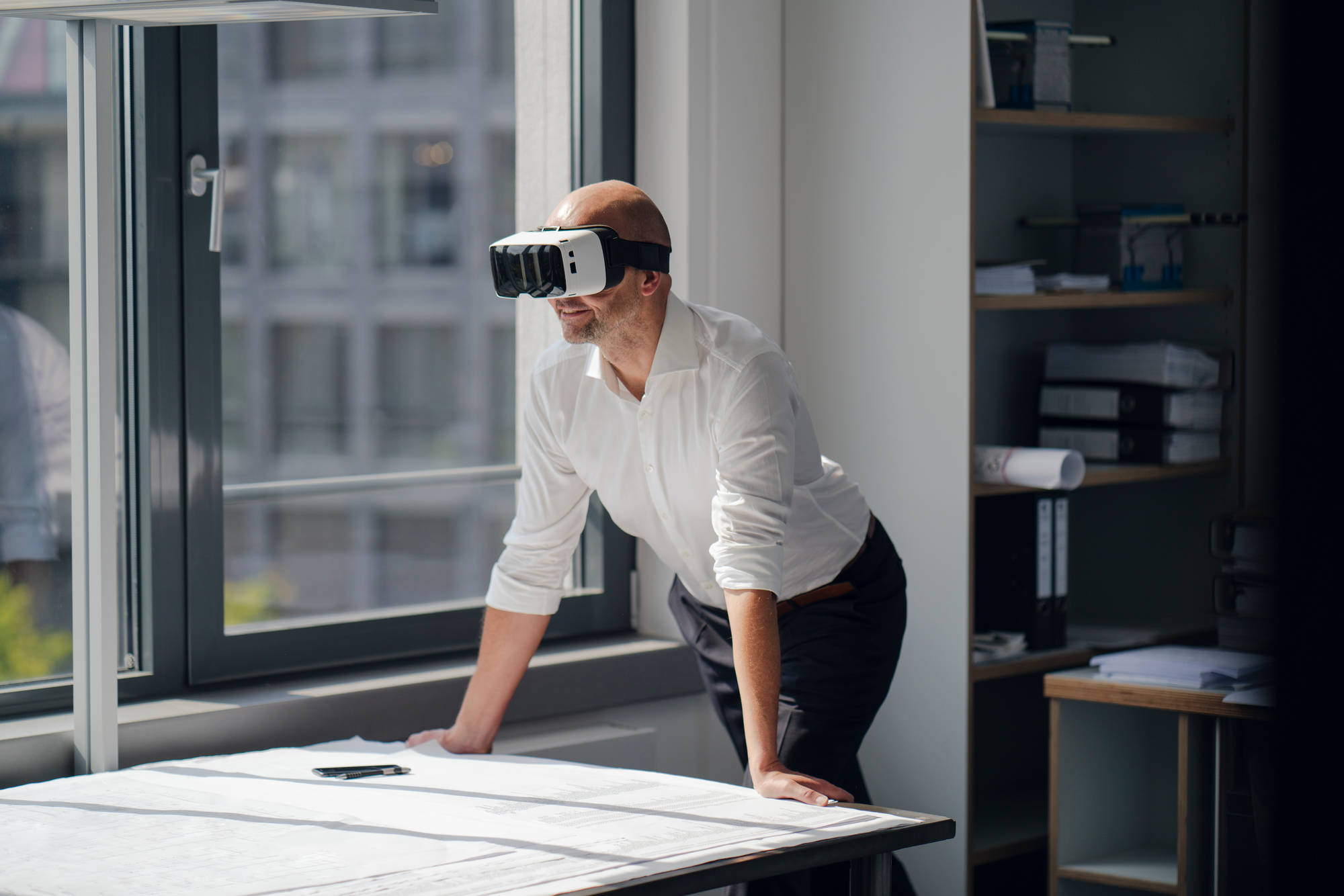-
Audit approach overview
Our audit approach will allow our client's accounting personnel to make the maximum contribution to the audit effort without compromising their ongoing responsibilities
-
Annual and short period audit
At P&A Grant Thornton, we provide annual and short period financial statement audit services that go beyond the normal expectations of our clients. We believe strongly that our best work comes from combining outstanding technical expertise, knowledge and ability with exceptional client-focused service.
-
Review engagement
A review involves limited investigation with a narrower scope than an audit, and is undertaken for the purpose of providing limited assurance that the management’s representations are in accordance with identified financial reporting standards. Our professionals recognize that in order to conduct a quality financial statement review, it is important to look beyond the accounting entries to the underlying activities and operations that give rise to them.
-
Other Related Services
We make it a point to keep our clients abreast of the developments and updates relating to the growing complexities in the accounting world. We offer seminars and trainings on audit- and tax-related matters, such as updates on Accounting Standards, new pronouncements and Bureau of Internal Revenue (BIR) issuances, as well as other developments that affect our clients’ businesses.
-
Tax advisory
With our knowledge of tax laws and audit procedures, we help safeguard the substantive and procedural rights of taxpayers and prevent unwarranted assessments.
-
Tax compliance
We aim to minimize the impact of taxation, enabling you to maximize your potential savings and to expand your business.
-
Corporate services
For clients that want to do business in the Philippines, we assist in determining the appropriate and tax-efficient operating business or investment vehicle and structure to address the objectives of the investor, as well as related incorporation issues.
-
Tax education and advocacy
Our advocacy work focuses on clarifying the interpretation of laws and regulations, suggesting measures to increasingly ease tax compliance, and protecting taxpayer’s rights.
-
Business risk services
Our business risk services cover a wide range of solutions that assist you in identifying, addressing and monitoring risks in your business. Such solutions include external quality assessments of your Internal Audit activities' conformance with standards as well as evaluating its readiness for such an external assessment.
-
Business consulting services
Our business consulting services are aimed at addressing concerns in your operations, processes and systems. Using our extensive knowledge of various industries, we can take a close look at your business processes as we create solutions that can help you mitigate risks to meet your objectives, promote efficiency, and beef up controls.
-
Transaction services
Transaction advisory includes all of our services specifically directed at assisting in investment, mergers and acquisitions, and financing transactions between and among businesses, lenders and governments. Such services include, among others, due diligence reviews, project feasibility studies, financial modelling, model audits and valuation.
-
Forensic advisory
Our forensic advisory services include assessing your vulnerability to fraud and identifying fraud risk factors, and recommending practical solutions to eliminate the gaps. We also provide investigative services to detect and quantify fraud and corruption and to trace assets and data that may have been lost in a fraud event.
-
Cyber advisory
Our focus is to help you identify and manage the cyber risks you might be facing within your organization. Our team can provide detailed, actionable insight that incorporates industry best practices and standards to strengthen your cybersecurity position and help you make informed decisions.
-
ProActive Hotline
Providing support in preventing and detecting fraud by creating a safe and secure whistleblowing system to promote integrity and honesty in the organisation.
-
Accounting services
At P&A Grant Thornton, we handle accounting services for several companies from a wide range of industries. Our approach is highly flexible. You may opt to outsource all your accounting functions, or pass on to us choice activities.
-
Staff augmentation services
We offer Staff Augmentation services where our staff, under the direction and supervision of the company’s officers, perform accounting and accounting-related work.
-
Payroll Processing
Payroll processing services are provided by P&A Grant Thornton Outsourcing Inc. More and more companies are beginning to realize the benefits of outsourcing their noncore activities, and the first to be outsourced is usually the payroll function. Payroll is easy to carve out from the rest of the business since it is usually independent of the other activities or functions within the Accounting Department.
-
Our values
Grant Thornton prides itself on being a values-driven organisation and we have more than 38,500 people in over 130 countries who are passionately committed to these values.
-
Global culture
Our people tell us that our global culture is one of the biggest attractions of a career with Grant Thornton.
-
Learning & development
At Grant Thornton we believe learning and development opportunities allow you to perform at your best every day. And when you are at your best, we are the best at serving our clients
-
Global talent mobility
One of the biggest attractions of a career with Grant Thornton is the opportunity to work on cross-border projects all over the world.
-
Diversity
Diversity helps us meet the demands of a changing world. We value the fact that our people come from all walks of life and that this diversity of experience and perspective makes our organisation stronger as a result.
-
In the community
Many Grant Thornton member firms provide a range of inspirational and generous services to the communities they serve.
-
Fresh Graduates
Fresh Graduates
-
Students
Whether you are starting your career as a graduate or school leaver, P&A Grant Thornton can give you a flying start. We are ambitious. Take the fact that we’re the world’s fastest-growing global accountancy organisation. For our people, that means access to a global organisation and the chance to collaborate with more than 40,000 colleagues around the world. And potentially work in different countries and experience other cultures.
-
Experienced hires
P&A Grant Thornton offers something you can't find anywhere else. This is the opportunity to develop your ideas and thinking while having your efforts recognised from day one. We value the skills and knowledge you bring to Grant Thornton as an experienced professional and look forward to supporting you as you grow you career with our organisation.
It has been more than two years since the COVID-19 pandemic broke out and started to wreak havoc in the Philippines in early March 2020. The pandemic has driven both businesses and individuals to recalibrate and reassess priorities. Many companies and even households resorted to cutting down expenditures to mitigate the financial impact of the pandemic (e.g., reduction in or loss of household income for those affected by businesses’ workforce rationalization, and decrease in sales, especially for companies belonging to heavily affected industries like hotels and airlines). Many Filipinos lost jobs, businesses, and even loved ones.
The past two years have also brought out the best in us. Despite the difficulties, what remained in us Filipinos is our human nature of being resilient. “COVID ka lang, Pinoy kami,” as we say. Many companies transitioned to work-from-home setups and other more flexible working arrangements. During this seemingly depressing period, we have learned to maximize the use of technology more than ever – virtual meetings, classes, concerts, and even virtual celebrations. Businesses were pushed to their limits and had no choice but to innovate and adapt to the changing times. Many companies switched to e-commerce and went digital. For many enterprises, COVID-19 has left them with only two options – to find new ways to survive and eventually thrive, or to stick with the old ways, struggle and eventually halt operations.
Many things have changed in just a span of two years. Now, looking back to when this entire crisis started, how far have we gone? Moving forward into the future, where are we going?
Looking Back
COVID-19 has indeed caused a downturn in economic stability and significant disruption in our lives for the past two years since the first case was reported by the Department of Health (DOH) in late January 2020. Like a thief in the night, COVID-19 broke into our homes when we were most vulnerable. We were not really prepared for a health issue of this extent. One of the government’s responses to curb COVID-19 transmission was to impose different types of community quarantine in different parts of the country at different time periods, coupled with the imposition of health protocols everywhere such as mandatory use of face masks and face shields, social distancing, and personal hygiene. We shifted back and forth between community quarantine classifications – from the enhanced community quarantine (ECQ), modified ECQ, general community quarantine (GCQ) and modified GCQ to the most recent Alert Levels 1 to 5. The dilemma was when to impose and when not to prematurely lift or ease lockdowns. It had always been a struggle between public health and economic recovery. The stability of our healthcare system was challenged in the same way as the sustainability of many businesses were threatened.
Another issue that we faced was contact tracing and mass testing. Regular COVID-19 testing for an ordinary Filipino was both inconvenient and costly, not to mention that many workers were faced with the risk of losing jobs due to actions by some businesses to lay off employees to mitigate the impact on operations. Nonetheless, the government’s target was to “test, trace and treat”, as much as possible, to “flatten the curve”. For more than two years, COVID-19 claimed a total of 60,455 lives or 1.6% of 3.7 million confirmed cases, based on the data from the World Health Organization as of May 24, 2022.
The vaccination drive can be considered as one of the major breakthroughs in our fight against COVID-19 in the country. It took some time before Executive Order No. 121, s. 2020, was signed by President Rodrigo Duterte on December 2, 2020 allowing the Food and Drug Administration to grant Emergency Use Authorization to COVID-19 vaccines and drugs, and the vaccine rollout to officially kick off in March 2021. Based on latest updates from the DOH, more than 75% of the target population in the country is already fully vaccinated. As of May 24, 2022, 149.7 million total vaccine doses have been administered throughout the country, with 69.4 million being fully vaccinated, and 13.9 million booster doses administered.
Just when the world has started recuperating from the negative impact of the pandemic, the growing geopolitical tension between Russia and Ukraine affected and continues to affect global economies. While direct impact on the Philippine economy is less severe due to our limited exposures to both countries, the most felt impact is the spike in domestic pump prices, among other commodity price surges, which was also the result of sharp increases in global oil prices since first quarter of 2022 and disruptions in global oil supply, considering Russia is the second largest crude oil exporter next to Saudi Arabia. Data from the Department of Energy showed that as of end of April 2022, year-to-date adjustments in domestic oil prices stood at a net increase of P17.80/liter for gasoline, P30.30/liter for diesel, and P23.90/liter for kerosene.
Moving Forward
The government’s actions for the past years, the response and decisions of each one of us as citizens of this country, and a lot of other factors and circumstances have led us to where we are right now. As we move forward to our third year into this pandemic, we have seen further easing of restrictions especially in the past several weeks. Wearing of masks is still being mandated but outdoor activities, face-to-face events and social gatherings, which have been restricted for several months, are now already being allowed. We have been given more freedom to do the things we used to enjoy doing before the pandemic including travels, vacation, and shopping. Limits in seating capacities in public transports and in workplaces have already been lifted as well. As more and more people continue to live their lives out of their homes, road traffic condition has also worsened, and is now almost comparable to pre-pandemic levels. It is undeniable that foot traffic in malls and commercial establishments has also significantly increased, which is actually good for our local businesses and the economy.
For the past few months, we have seen a slow but persistent economic growth. Recent reports from the Department of Finance show that the Philippines’ gross domestic product has grown by a stronger-than-anticipated 8.3% year-on-year during the first quarter of 2022 and already reverted to pre-pandemic output levels. “Its solid macroeconomic fundamentals – made even stronger by the game-changing reforms carried out by President Duterte during the COVID-19 crisis to further liberalize the economy and attract investors – will return the Philippines soon enough to its pre-pandemic path of rapid and inclusive growth,” Finance Secretary Carlos Dominguez III said.
However, with the emergence of new highly infectious Omicron subvariants, we are constantly being reminded that while we have seen significant improvements in the way we deal with this health crisis, we are certainly not out of this sinkhole yet. While many restrictions have eased, we must remain cautious and continue to follow health protocols like wearing of masks, social distancing, and proper hygiene. The new viral strain and its potential surge that could cause a negative impact on our gradual economic recovery, along with other uncertainties, are among those that will be inherited by the new government administration soon assuming office. How smooth the transition of leadership in government will be and how the economic plans of the new administration will come into play in our current situation are critical factors that will determine where we will find ourselves in the next few years. Of course, as citizens, we need to play our part and to work together to overcome the challenges to come, just like how we have been doing for the past two years.
We still do not know how far we are from going back to normal (if that is even possible at this point) or to our own definition of the “new normal”. Yet, we know, or at least believe, that we are heading there. We did not survive this long just to quit. We only need a tiny speck of light at the end of this seemingly long tunnel for us to hold on to our belief that there is hope. Of course, there will always be uncertainties but during these times more than ever, we find comfort in the words of the Lord, who gives us hope for a brighter tomorrow – “For I know the plans I have for you, declares the Lord, plans to prosper you and not to harm you, plans to give you hope and a future. Then you will call on me and come and pray to me, and I will listen to you. You will seek me and find me when you seek me with all your heart. I will be found by you. (Jeremiah 29:11-14)”
As published in Mindanao Times, dated 13 June 2022




